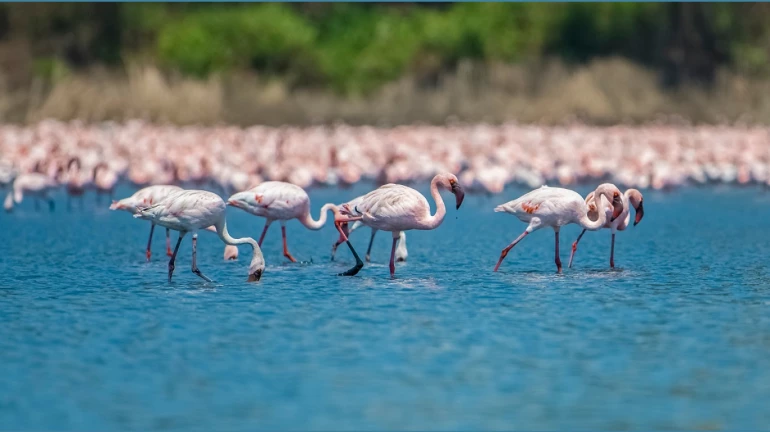
Celebrating the iconic bird of Mumbai and discussing ways to protect the lesser Flamingos, a webinar titled, ‘The Flight of the Pink- How can Mumbai protect the lesser flamingoes’, was conducted today on the occasion of World Migratory Bird Day. The webinar was organized as a part of the ‘Biodiversity by the Bay’ campaign, initiated by Ministry of Mumbai’s Magic which is a citizen’s collective comprising of Mumbaikars who wish to bring the issue of protecting biodiversity to the forefront.
Concerned by the impact of unsustainable development on Mumbai’s iconic flamingos, award-winning environment journalist, Bahar Dutt; wildlife filmmaker Ashima Narain; CCF and Head of Mangrove Cell, Virendra Tiwari; Ritwick Dutta from Legal Initiative for Forest and Environment and Stalin Dayanand, Director of Projects at Vanashakti along with citizens of Mumbai today organized a virtual conference to identify solutions to protect the lesser flamingos.
Speaking on ways to protect the iconic bird and the wetlands where they feed in Mumbai, Stalin Dayanand, Director of Projects, Vanashakti said, “After the loss of 2000 ha of Wetlands for the Navi Mumbai International Airport and JNPT expansions, the habitat for flamingos and wetland birds has shrunk to 20% of what it was. The Thane creek Flamingo Sanctuary is the last refuge for 1.5 lakh birds which concentrate here now. It is an important bird area that needs all the mangroves, grasslands, water bodies, rocky areas of the creek in contiguity with the sanctuary to be added to the sanctuary. Presently more than 60% of the habitat has been kept out of the sanctuary limits obviously to help real estate and other projects later on. The ESZ notification status won’t protect it as a sanctuary can.”
Since the 1980s, flocks of 30,000-40,000 flamingos have been settling along the Thane Creek between September and April. While four decades back the conditions were ideal for flamingos to visit the city, but today, unfortunately, we see them being squeezed on smaller pockets, forcing the flamingos to feed within a tiny piece of land owing to the continuous destruction of wetlands and development activities across several areas.
Previously a flamingo hotspot, the Uran wetlands, has been recently reclaimed to make way for a new airport. Meanwhile, the ongoing construction of the Mumbai Trans Harbour Link – a 22km sea bridge that cuts across mangroves and mudflats to Navi Mumbai – means flamingos no longer flock in such numbers to Sewri Bay, which lies between Thane Creek and the Arabian Sea. To add on to that, clearance has been given to India’s first bullet train to pass through the creek’s protected flamingo sanctuary. If the development continues to happen in such unsustainable fashion, Mumbai will not be left with wetlands or mangroves, neither the iconic flamingos.
Recently Bombay high court-appointed wetlands and mangroves protection panel ordered district authorities to maintain wetlands and transfer mangroves to forest department which in turn will be helpful to save the creek from severe anthropogenic stress. The panel also ordered shifting of Uran garbage dump from Bori Pakhadi and prohibited the Uran municipal council from further damaging the mangroves.





